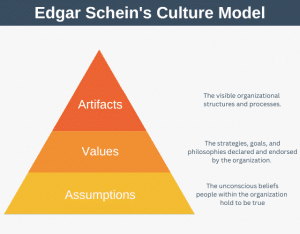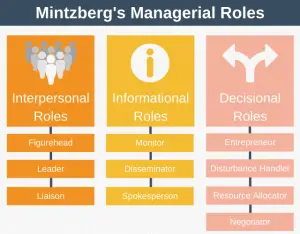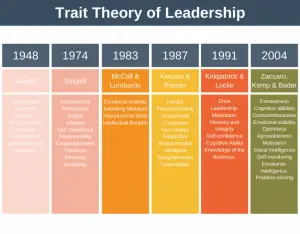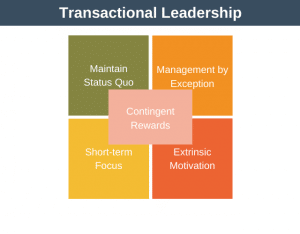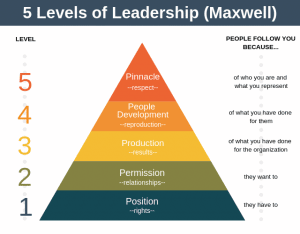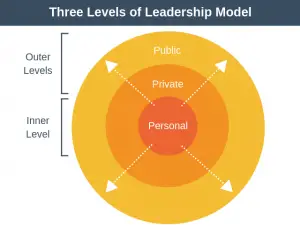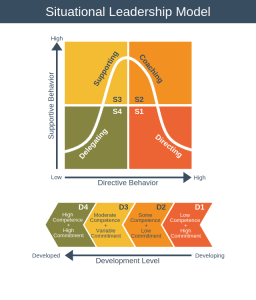The Path-Goal Theory of Leadership is a model which proposes that a leader should change their leadership style depending on their situation.
At it’s most basic, the leader will adopt a style (path) based on their situation with the aim of achieving an objective (goal).
Robert House originally developed Path-Goal theory in 1971.
The Path-Goal Theory of Leadership belongs to a group of leadership models called contingency models.
All contingency leadership models share one thing in common. They state that your style of leadership should be contingent on the situation you face. Other theories falling under this umbrella include Fiedler’s Contingency Theory, Situational Leadership Theory, and Decision-Making Theory.
Path-Goal Theory can be quite complicated to understand as there are many parts to it. An excellent place to start is to realize that the theory is built upon the Expectancy Theory of Motivation. You’ll understand Path-Goal Theory much more clearly if you understand Expectancy Theory, so let’s take a moment to summarize that theory quickly.
xpectancy Theory in a Nutshell
Expectancy theory says that an employee will be motivated to work hard when:
- They believe they can hit the targets their manager has set.
- And they know they will receive a reward if they hit their target.
- And they want or value the reward on offer.
An individual in a team will be highly motivated if all three of these factors are true for them.
Path-Goal Theory of Leadership
Just like Expectancy Theory, Path-Goal Theory also states how to go about motivating your team to achieve their objectives. According to the theory, you should do this by:
- Ensuring goals are clear and that desirable rewards are available.
- Making the path to the goal clear.
- Removing obstacles and roadblocks that the subordinate might encounter on route to the goal.
- Providing support, coaching, and guidance.
So far this all sounds very much like Expectancy Theory. So what’s the difference? Well, the difference is that Path-Goal theory states not only that leaders should focus on the motivational factors above, but that they should use a specific leadership style based on the situation they find themselves in.
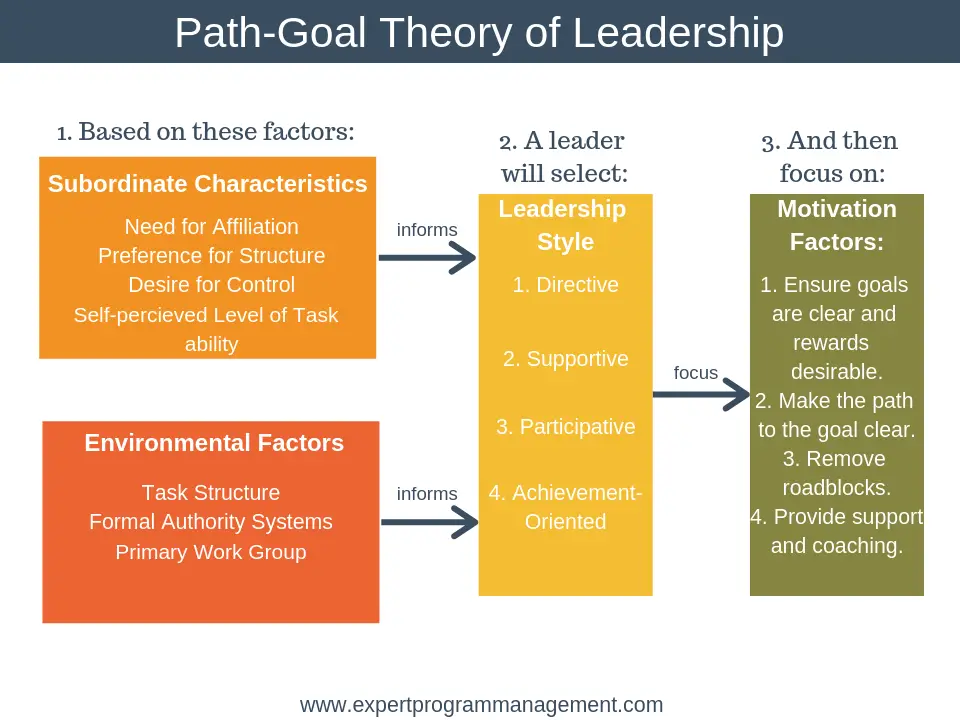
As you can see, as a leader you begin by assessing the characteristics of your subordinates and any environmental factors. You will then choose the leadership style most suited to your assessment. Finally, you will focus on the key motivational factors to ensure your subordinates are motivated to hit their objectives.
Let’s walk through each of these in turn, starting with leadership style.
Leadership Styles
According to the model, there are four styles of leadership:
- Directive
- Supportive
- Participative
- Achievement-Oriented
According to Path-Goal theory, at any given time for a particular situation, one or more of these styles will be the one that most motivates a subordinate. That is, under certain circumstances, it may be best to use more than one of these styles at the same time.
1. Directive
Directive leaders tell their subordinate precisely what they want them to, how they should do it, and the deadline for completing the task.
Directive leadership is similar to the telling style in Situational Leadership. The leader makes unambiguous rules and regulations which must be followed by subordinates.
2. Supportive
Supportive leaders create a warm and friendly environment and show concern for their subordinate. These leaders are friendly and approachable and do their best to make work pleasant for their followers.
3. Participative
Participative leaders had a collaborative style and involve subordinates in decision making by welcoming their ideas and input. They consider this information before making their final decision.
4. Achievement-Oriented
Achievement-oriented leaders challenge their subordinates to strive for excellence in the workplace continually. This type of leader establishes a high baseline for performance and expects continuous improvement from this baseline.
Achievement-oriented leaders display confidence in their subordinates to achieve the high standards and goals they have set.
Subordinate Characteristics
How well your leadership style works will depend on your subordinates. Essentially, the effectiveness of each leadership style will be contingent on the characteristics of your subordinates (and the types of tasks they need to perform).
The model identifies four characteristics:
- Need for affiliation.
- Preference for structure.
- Desire for control.
- Self-perceived level of task ability.
Good leaders will create congruence between their leadership style and their subordinates characteristics. No one leadership style will be right for all subordinates. Leaders need to pick the style that is most likely to boost performance. Let’s examine each of these characteristics in turn:
1. Need for Affiliation
Need for affiliation describes subordinates need to “belong” within the group. Subordinates with a strong need to belong prefer working with Supportive leaders, as this makes them feel more a part of the team.
Achievement-oriented leadership may work better where subordinates have a low need for affiliation.
2. Preference for Structure
Preference for structure describes a subordinates preference for structure and rigidity in their working practices and relationships.
Subordinates who prefer more structure will be suited to directive leadership. Alternatively, subordinates who prefer less structure will be suited to other leadership styles such as participative and achievement-oriented.
3. Desire for Control
The desire for control refers to whether a subordinate has an internal or an external locus of control.
Subordinates with an internal locus of control believe that they have control over events which happen to them. Subordinates with an external locus of control think external factors are primarily responsible for events which occur to them.
Subordinates with an internal locus of control prefer a participative leadership style. This is because it makes them feel that they are a vital part of the decision making process. Subordinates with an external locus of control prefer a directive style.
4. Self-Perceived Level of Task Ability
Self-perceived level of task ability refers to how good a subordinate believes they are at performing a task.
The less good they believe they are at performing a task, the more they will prefer a directive leadership style. Subordinates with a high belief in their ability may prefer a more achievement-oriented leadership style.
The Environment
There are three components to take into account when thinking about the environment.
- Task structure
- Formal authority systems
- Primary work group
The key to understanding the environment is to realize that according to Path-Goal theory leaders shouldn’t duplicate and environmental factors that are already present in the organization. So, for example, if formal authority systems are robust and rigid, then managers should avoid a directive leadership style.
Managers should look to boost low performance by providing what is not already provided by the environment.
Let’s examine each of the factors in turn.
1. Task Structure
Task structure refers to how structured tasks are.
If tasks are highly structured, then leaders should avoid a directive leadership style. Perhaps consider a supportive leadership style. Conversely, unstructured tasks may create the need for a directive leadership style.
2. Formal Authority Systems
Formal authority systems refer to the policies, controls, and rules of the organization. These instruct employees on what to do and what not to do in different situations.
If the formal authority structure is clear, then leaders should avoid a directive leadership style. Conversely, if the formal authority structure isn’t that clear, then a directive style can be beneficial.
3. Primary Work Group
Primary work group refers to the level of support the subordinate receives from the people around them, the people they work alongside.
If a subordinate doesn’t receive much emotional support from their colleagues, then a supportive style can be appropriate.
Bringing It All Together
The following diagram provides a summary of how to adjust your leadership style based on the different subordinate preferences and environmental factors you encounter.
| Leadership Style | Follower Characteristics | Task Characteristics |
|---|---|---|
| Directive | Dogmatic Authoritarian | Ambiguous Unclear rules Complex |
| Supportive | Unsatisfied Need affiliation Need human touch | Repetitive Unchallenging Mundane |
| Participative | Autonomous Need for control Need for clarity | Ambiguous Unclear Unstructured |
| Achievement-oriented | High expectations Need to excel | Ambiguous Challenging Complex |
Difference from Situational Leadership
If you’re using Situational Leadership, you adjust your leadership style according to the level of development of your subordinates. The Path-Goal theory differs from Situational Leadership by stating that you should adapt your style based on the motivational needs of your team.
Advantages and Disadvantages
Advantages of the theory include:
- It provides a framework for leaders to understand how their style influences the motivation of their subordinates.
- It’s unique in that it links motivational theory to leadership.
- It highlights that the role of leaders is to guide and help their subordinates achieve.
Disadvantages of the model include:
- It’s very complicated to understand.
- With so many variables involved, studies are unable to corroborate that the theory works in the real world.
- Sometimes a particular situation will require more than one style of leadership.
- In the leader-subordinate relationship, Path-Goal theory places almost all of the responsibility on the shoulders of the leader. Thus, there is a risk that subordinates become dependent on the leader and fail to develop to the next level.
Path-Goal Theory Example
In this example, imagine you are the manager of a small team. One of your team members, Bob, has consistently failed to hit his targets. Upon speaking with Bob, you realize that Bob’s lack of performance is because his motivation levels are low.
How can you use Path-Goal theory to boost Bob’s motivation and thus his performance? Well, you can use the theory as a framework to examine Bob’s motivation.
Upon further investigation we discover the following:
| Question | Answer |
|---|---|
| Foundation: | |
| Are Bob’s targets achievable? | Yes |
| Does Bob believe he can achieve his objectives? | Yes |
| Does Bob value his reward? | Yes |
| Does Bob path to the goal clear? | Yes |
| Are there any roadblocks or obstacles to resolve? | Yes |
| Is Bob’s work satisfying? | Yes |
| Bob’s Characteristics: | |
| – Does Bob have a high need for affiliation? | Yes |
| – Does Bob prefer structured working? | Yes |
| – Does Bob have an internal or external locus of control? | Internal |
| – What is Bob’s perceived level of task ability? | High |
| Bob’s Environment: | |
| – Is the task structure rigid? | No |
| – Is formal authority strong? | No |
| – Does Bob’s formal work group provide support? | No |
Form this checklist there are several issues.
Bob does a complicated job and likes to work in a structured way. However, in his environment, formal authority isn’t strong, and Bob doesn’t receive much if any support from his peers, even though he has a high need for affiliation. There are also some roadblocks in the way of Bob achieving his targets.
As Bob’s manager, you decide to try and take a twofold approach to try and boost his motivation.
- Firstly, you decide to use a directive leadership style with Bob to provide him with the structure he craves.
- Secondly, you choose to take something of a supportive leadership style to coach Bob through the roadblocks he’s facing. By doing this, you will help meet his need for affiliation.
Summary
The Path-Goal Theory of Leadership is a complicated framework that reminds us that the purpose of leadership is to facilitate the success of your subordinates.
The theory proposes many ways to make followers successful which you can diagnose using a checklist.

